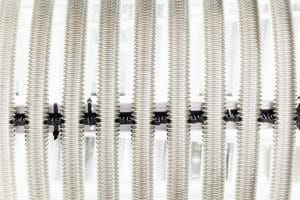 Phase-change cooling technology is just one of the many eco-friendly and efficient thermal management methods that modern heat exchangers employ. Along with other methods such as conduction and natural/forced convection, phase-change cooling provides a much more efficient and reliable way to cool electrical enclosures than more conventional air conditioners and air compressors. By utilizing the natural properties of certain cooling fluids (such as water), heat exchangers provide continuous electrical cooling and other thermal management processes in a much safer and more energy-efficient manner.
Phase-change cooling technology is just one of the many eco-friendly and efficient thermal management methods that modern heat exchangers employ. Along with other methods such as conduction and natural/forced convection, phase-change cooling provides a much more efficient and reliable way to cool electrical enclosures than more conventional air conditioners and air compressors. By utilizing the natural properties of certain cooling fluids (such as water), heat exchangers provide continuous electrical cooling and other thermal management processes in a much safer and more energy-efficient manner.
The Science Behind Heat Exchangers
Phase-change cooling involves harnessing a cooling fluid’s natural latent heat of vaporization, or the point at which it transitions from a liquid phase into a gaseous phase (and vice versa). Instead of using chilled air to eradicate the electrical waste heat in an enclosure, a heat exchanger’s fluid can collect the heat until it vaporizes, all without any notable rise in the enclosure’s temperature. Once the liquid becomes a gas, it’s less dense and will naturally travel to the cooler part of the heat exchanger, where it can dissipate the heat. As it does so, the gas transitions back into a liquid, becoming dense again and recirculating back toward the heat source.
The Variety of Benefits Compared to Air Conditioning
Within a heat exchanger, the fluid flows continuously, often within a closed loop, so waste heat never has a chance to accumulate into pockets and damage sensitive equipment. This means the fluid itself never leaves the heat exchanger, and therefore, doesn’t require constant re-filling as the Freon in an air conditioner does. Phase-change cooling also doesn’t require complicated equipment that needs to be repaired and maintained frequently, so they can free up time for employees to be more productive in other tasks.
For more information about heat exchangers that utilize phase-change cooling, call Noren Thermal Solutions in Taylor, TX, at 866-936-6736.







